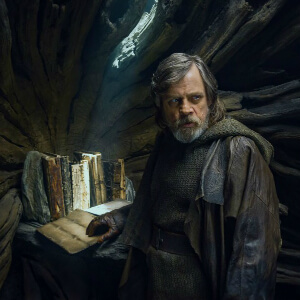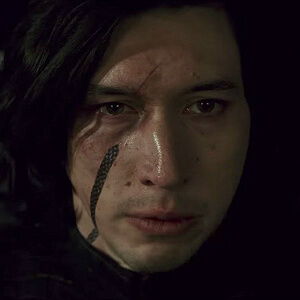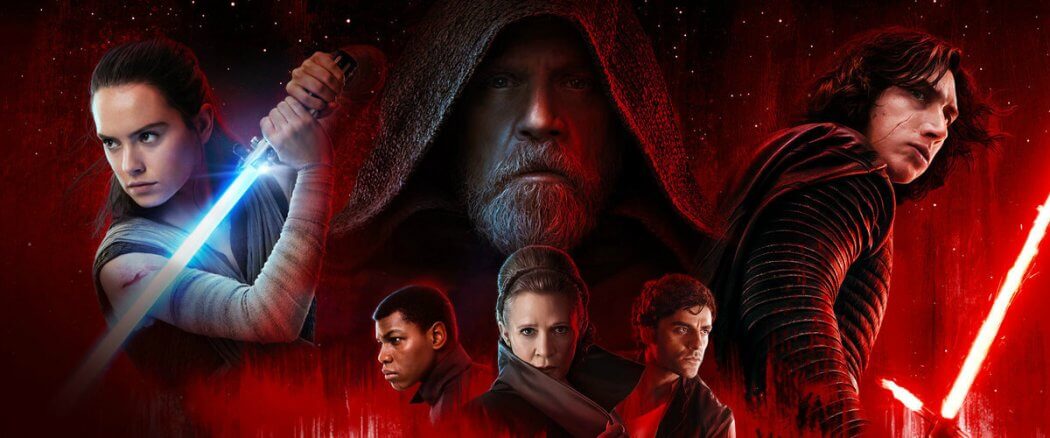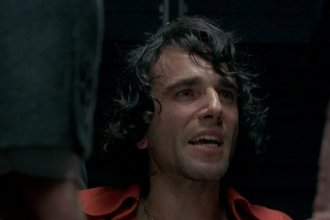I’ve noticed that, when it comes to any art form, classification and genre are more important that you would think. We might be at a time when people eschew labels for things like relationships and spirituality, but being able to put things into categories still matters when it comes to our entertainment. While they may be of the same mold, a “science fiction comedy” and “science fiction mystery” are going to draw different audiences. And being able to describe something in terms of what we know still plays a vital role in how we engage in the art we enjoy. In a similar way, franchises have taken on a distinct form of classification. For the most part, this is a very good thing. Films that take place in the same universe should be party to the operating and creative rules of that world. We don’t begrudge any of the eight Harry Potter movies for being whimsical just as we don’t cry foul when Lord of the Rings movies are needlessly detailed. Whimsy and detail aren’t inherently bad things, but we’re willing to forgive overindulgence when it makes up a key element to the universe we love.
And yet, these creative calling cards don’t always work out so well. Take the ongoing superhero battle between Marvel and DC. Marvel has made a franchise-wide commitment to humor while DC has chosen to zero in on neutral colors as the dominant aesthetic. They’re both completely different stylistic choices, and neither franchise would feel complete without them. But in Justice League, the drab colors don’t match the upbeat writing, making it an incoherent mess. And while the sarcastic wit of Marvel makes their movies consistent, it also tends to dull meaningful character moments in favor of a good punchline or cathartic laugh. Both franchises know what works best for them, though, and stick to their guns, for better and worse.
Which brings us to Star Wars and, more specifically, The Last Jedi. One of the big stories around the film’s release has been the lackluster fan response. And I wonder if part of that is because The Last Jedi doesn’t really feel like a Star Wars film. It’s something I was thinking about almost halfway through my original viewing. For one or many reasons, The Last Jedi doesn’t hit all the same buttons as its seven — eight if you count Rogue One — predecessors. And by the film’s end, I think it’s fairly clear that’s a good thing for both the present and the future of the Star Wars franchise.
Only a Sith Deals in Absolutes
The above line is one delivered by Ewan McGregor’s Obi-Wan Kenobi in Revenge of the Sith. I remember it specifically because the Christian culture bloggers had a fit at the time of Revenge’s release. To them, it was a confirmation of the supernatural lies Star Wars was trying to spread amongst its young, impressionable audience. Absolutes are good, they argued, and the categorization of black-and-white being a strictly evil impulse was false. And if that line caused a stir, I’m sure The Last Jedi has as well. While sides eventually must be chosen, the film speaks to the more mystical elements of the Star Wars universe, namely the Force. Whereas the Force is boiled down to science and genetics in the prequels, it takes on a mythical quality in The Last Jedi, not unlike in the original trilogy.
 However, writer-director Rian Johnson takes it to a new place in his first crack at the beloved space opera franchise. Much of the The Last Jedi’s focus is the inner-conflict of the main characters: the struggle between desire and duty or the past and the future. It’s a seed JJ Abram’s planted in The Force Awakens, specifically in the trilogy’s villain, Kylo Ren. And while it does harken back to moments in the original trilogy — Luke confronting his demons on Dagobah stands out — the turmoil inside these new characters feels more thematic than it does like a device. While Luke’s fever dreams in The Empire Strikes Back feel more like a, “Will he or won’t he,” ploy, Rey’s struggle to know her own past and reconcile it with who she’s “destined” to be feels more like something we’re supposed to ask about ourselves.
However, writer-director Rian Johnson takes it to a new place in his first crack at the beloved space opera franchise. Much of the The Last Jedi’s focus is the inner-conflict of the main characters: the struggle between desire and duty or the past and the future. It’s a seed JJ Abram’s planted in The Force Awakens, specifically in the trilogy’s villain, Kylo Ren. And while it does harken back to moments in the original trilogy — Luke confronting his demons on Dagobah stands out — the turmoil inside these new characters feels more thematic than it does like a device. While Luke’s fever dreams in The Empire Strikes Back feel more like a, “Will he or won’t he,” ploy, Rey’s struggle to know her own past and reconcile it with who she’s “destined” to be feels more like something we’re supposed to ask about ourselves.
So while some critics like to look at the franchise’s past and fashion it as a breeding ground for relative morality, Star Wars characters have always been pretty easy to put into categories. The Last Jedi takes this formulaic choice and casts it aside, choosing instead to focus on the complexities of its characters. Asking more substantial questions about who they are causes us to ponder the same questions they do, and in turn give us something more to take home than a memorable lightsaber battle.
A Big Universe and a Small Movie
A lot of talk surrounding the Star Wars mythos has always been centered around the idea of circular storytelling. It was something brought to fans’ attention after George Lucas mentioned it during the making of the prequels. In essence, Lucas wanted the prequels to echo the spirit and themes of the original trilogy, sometimes in great detail. It didn’t work quite as well then, but there must’ve been something to the idea. Almost everyone who saw it recognized the obvious similarities between The Force Awakens and A New Hope. So naturally, it would be easy to identify The Last Jedi as the spiritual equal to The Empire Strikes Back.
The comparison does work in one major way. Both movies take the scale of the Star Wars universe and shrink it down to its most minimal proportions. The bulk of the movie takes place over the course of just a few days, much of it happening in two different locations. In fact, the only time the movie really starts to go off the rails is when two characters leave on an inexplicable side quest and are wisely returned to the main action soon after.
 This smaller scale yields a film less driven by plot or technical craft than The Force Awakens. Paper-thin characters don’t hold up over the course of two-and-a-half hour movies, especially when they’re confined to one of two spaces. Star Wars films have always been grander in scale, so The Last Jedi’s commitment to its structural limitations is quietly daring. When we’re forced to really examine how we really feel about the film in a smaller space, flaws are amplified and successes feel more earned. Its why Leia floating through space to save herself feels so hokey, while the film’s second act twist leads to gasps in the audience. Rian Johnson gambled on the fact that his audience would confront his creative choices head on. That he holds his commitment to this scale is a victory in and of itself. The film’s solid character work and rousing third act take that earned victory and turn it into something even greater.
This smaller scale yields a film less driven by plot or technical craft than The Force Awakens. Paper-thin characters don’t hold up over the course of two-and-a-half hour movies, especially when they’re confined to one of two spaces. Star Wars films have always been grander in scale, so The Last Jedi’s commitment to its structural limitations is quietly daring. When we’re forced to really examine how we really feel about the film in a smaller space, flaws are amplified and successes feel more earned. Its why Leia floating through space to save herself feels so hokey, while the film’s second act twist leads to gasps in the audience. Rian Johnson gambled on the fact that his audience would confront his creative choices head on. That he holds his commitment to this scale is a victory in and of itself. The film’s solid character work and rousing third act take that earned victory and turn it into something even greater.
‘We Are What They Grow Beyond’
The choice to operate on a smaller scale also gives an added benefit to the Star Wars films they’ve yet to have: a real appreciation for artistry. As mentioned above, technical work has always been a strong point of the Star Wars films: music, lighting, costumes cinematography, etc. But rarely have we focused on the direction and the acting as much as we do now. In fact, there’s a strong contingent of fans that acknowledge the acting in the original Star Wars movies can be somewhat overdone. Much of this criticism is focused on Mark Hamill, who’s already less reserved than his counterparts Carrie Fisher or Harrison Ford. But it’s a criticism that does hold some water. The artistry of the the original Star Wars trilogy comes in its zeal for grandeur and bombast, not unlike an epic poem.
The new Star Wars, however, comes at a time when we’re appreciating finer art on a grander scale. High culture — and culture overall — is available to more people now than ever before. You don’t have to be a critic to appreciate good direction or a good performance. And some of these performances are better than any we’ve seen in Star Wars to this point. Kylo Ren got a lot of flack in The Force Awakens for being too angsty and conflicted. Despite this being an unfair criticism, Adam Driver takes his performance of Ren to another level in The Last Jedi, channeling his character’s previously uncontrolled rage and compressing it into something far more sinister and real.
 Daisy Ridley also gets a lot of opportunities to shine, opportunities she doesn’t let pass idly by. I was concerned about Ridley’s portrayal of Rey after rewatching The Force Awakens; namely, I wondered how far she could take her wandering, star-struck heroine before it began to feel thin and overdone. Instead, Ridley draws on another part of Rey’s psyche that quietly developed in The Force Awakens: the characters newfound sympathy for other people’s circumstances. It can be a pretty jarring shift from “lonely desert scavenger” to “part of something greater,” but Ridley pulls it off unassumingly, maintaining Rey’s good nature and misty-eyed innocence along the way. And while they’re largely cast aside, Oscar Isaac and John Boyega do solid work as well. My Force Awakens rewatch had also cast doubts on Boyega’s future with Finn as he seemed overly committed to cracking jokes and emotional outbursts. But under Johnson’s sturdy pen and eye, Boyega’s exiled stormtrooper is allowed to develop on the sidelines, earning his heroic stripes largely away from the main storyline.
Daisy Ridley also gets a lot of opportunities to shine, opportunities she doesn’t let pass idly by. I was concerned about Ridley’s portrayal of Rey after rewatching The Force Awakens; namely, I wondered how far she could take her wandering, star-struck heroine before it began to feel thin and overdone. Instead, Ridley draws on another part of Rey’s psyche that quietly developed in The Force Awakens: the characters newfound sympathy for other people’s circumstances. It can be a pretty jarring shift from “lonely desert scavenger” to “part of something greater,” but Ridley pulls it off unassumingly, maintaining Rey’s good nature and misty-eyed innocence along the way. And while they’re largely cast aside, Oscar Isaac and John Boyega do solid work as well. My Force Awakens rewatch had also cast doubts on Boyega’s future with Finn as he seemed overly committed to cracking jokes and emotional outbursts. But under Johnson’s sturdy pen and eye, Boyega’s exiled stormtrooper is allowed to develop on the sidelines, earning his heroic stripes largely away from the main storyline.
None of this can be done, of course, without Rian Johnson. While JJ Abrams is about as sure a thing as science-fiction fans can ask for, it was the correct move to largely hand over the future of the Star Wars franchise to Johnson. From Brick to his work in Breaking Bad, he’s always maintained the aura of a grounded filmmaker. His focus on character and making the most of the tools at his disposal have made him a surefire critical and audience favorite. And much like he’s done in the past, Johnson takes the pieces he’s given and molds something far greater out of them, setting a higher standard than the one he found before. Luckily, he’ll have a hand in maintaining that success, something he hasn’t been given a shot at to this point.
‘Let the Past Die’
If you look at some of Hollywood’s longest running film franchises, you’ll find a group that rarely diverts from its core values. The James Bond films will always be about a suave, ultra-capable super spy. Sometimes he’s more of a fighter, sometimes he’s more of a womanizer. But the main traits don’t change. The Nightmare on Elm Street movies will always be filled with gratuitous violence and bad jokes. And the Pink Panther movies will always have Jacques Clouseau.
In context, though, The Last Jedi’s move toward more meaningful depth could represent a more cultural shift as well as a tonal one. In addition to being more finely tuned on a human level, the film is overtly political. And whether you agree with its politics or not, it is refreshing to see art take a stand for something. In this instance, that’s a risk: Star Wars fans are notoriously finicky, and a segment has already come out strong against this latest entry. But Rian Johnson’s choices — creative and ideologically — make for something more substantive than what we’ve seen since the original trilogy… and maybe even more so.
It feels like an oversimplification to look at Paul’s words to Corinth, “I put the ways of childhood behind me,” and apply them to the way The Last Jedi diverts from its past. But Kylo Ren’s own words echo that sentiment toward the film’s end, “Let the past die — kill it if you must.”
That’s a strong sentiment, killing something you’ve known and trusted. But it’s one Rian Johnson commits to on the whole, creating a unique, rousing Star Wars entry that will canonize itself amongst the great science fiction entries of the 21st century. And if Johnson can capitalize on his success here, we may look back at The Last Jedi as a hyperspace leap that took Star Wars into a new galaxy, even farther away than the one we’ve been told about for the past 40 years.





